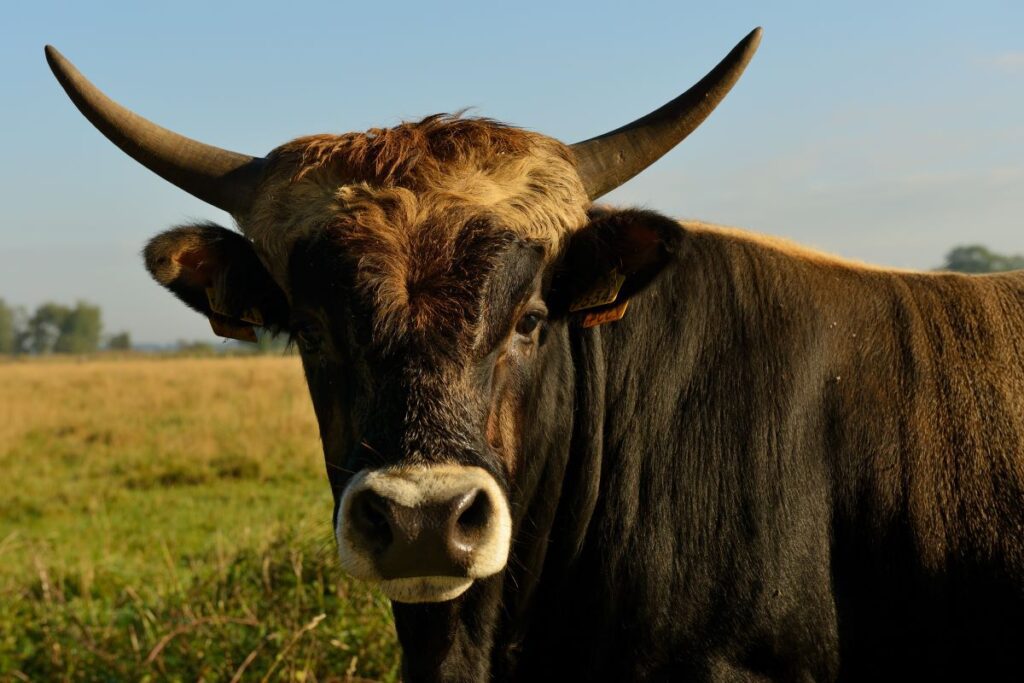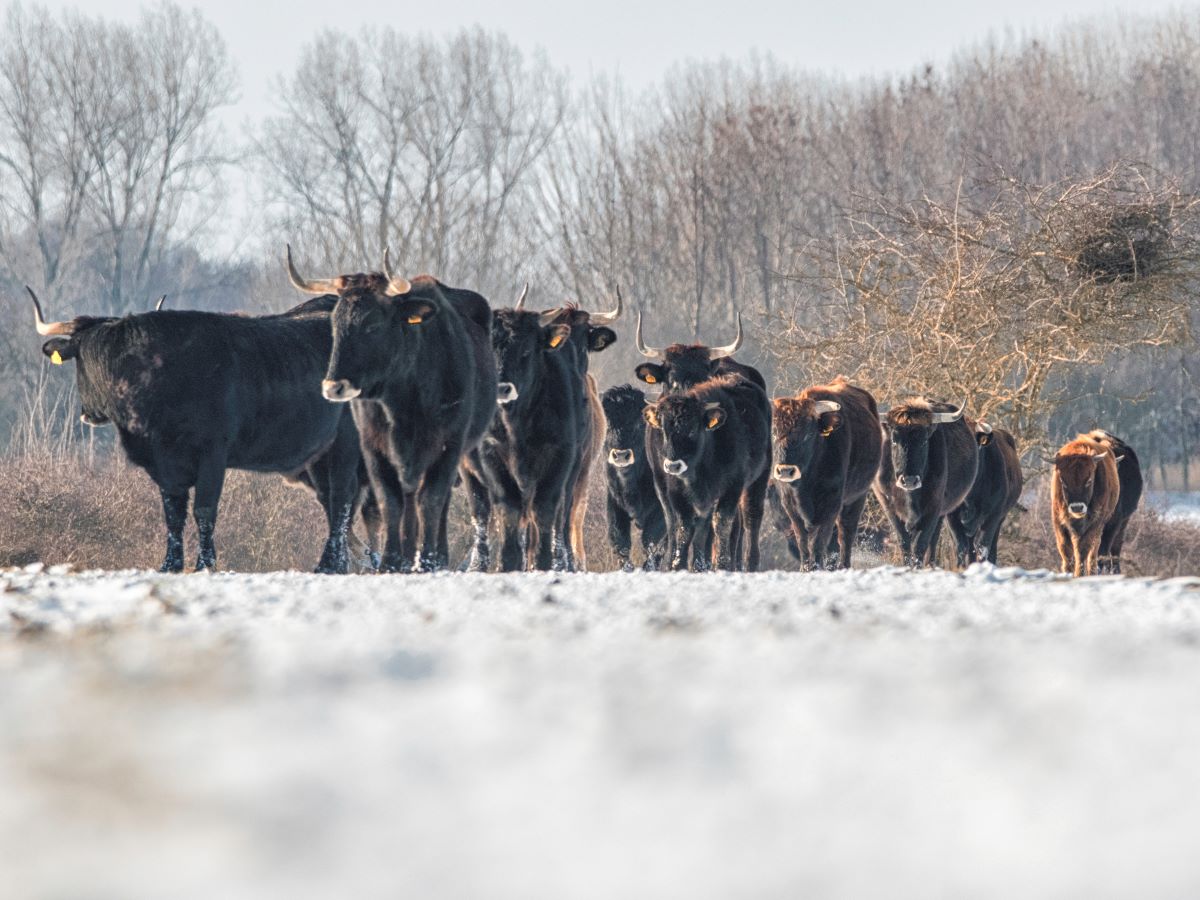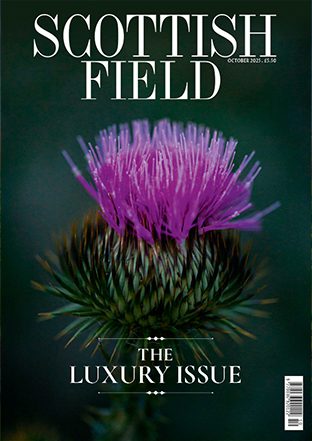
Plans for UK ‘return’ of ancient aurochs 400 years after European extinction laid out
Cattle bred to resemble aurochs, large wild-roaming cows and bulls, could be introduced to an estate near Loch Ness – 400 years, after their extinction.
Aurochs were once found across Europe, including Scotland, before habitat loss and hunting wiped them out in the 17th century.
The muscular, long-horned tauros have been bred to be as similar as possible to the ancient aurochs.
Charity Trees for Life has proposed plans to re-introduce a herd of up to 15 tauros from the Netherlands to its 4,000-hectare Dundreggan estate near Loch Ness in 2026
It would be the first introduction of tauros in the UK.
‘Introducing the aurochs-like tauros to the Highlands four centuries after their wild ancestors were driven to extinction will refill a vital but empty ecological niche – allowing us to study how these remarkable wild cattle can be a powerful ally for tackling the nature and climate emergencies,’ said Steve Micklewright, Chief Executive of Trees for Life.
‘Our Tauros Project is about looking forwards while learning from the past as we restore nature-rich landscapes that support wildlife and people, and are resilient to future environmental challenges.
‘We also want to give people the chance to experience in a safe way the awe and wonder of getting close to an animal that feels really wild.’
One of Europe’s largest land mammals – and the heaviest after the woolly mammoth and woolly rhinoceros – aurochs disappeared from Britain around 1300 BC.

Credit: Grazelands Rewilding.
The last aurochs died in Poland in 1627, but aurochs DNA has survived in a number of ancient original cattle breeds.
Tauros have been ‘back-bred’ to genetically replicate, resemble and behave like the aurochs as closely as possible.
Scientists in the Netherlands have sought to bring aurochs back to life since the early 2000s, by interbreeding ancient cattle breeds that are genetically and physically closest to the aurochs.
This has been aided by the first sequencing of the aurochs’ complete genome, in 2011.
Tauros bulls can grow to up to 1.8m (6ft) and cows 1.5m (5ft) in height, similar in size to aurochs.
There are already several hundred tauros in mainland Europe, in The Netherlands, Czechia, Croatia, Spain and Portugal.
Trees for Life said the cattle could boost biodiversity.
Tauros’s can create ‘bullpits’– bowls in the earth carved out by rutting bulls using their horns and hooves, or through strengthening their neck muscles by bashing their heads against one side of a pit.
Bullpits form micro-habitats that support invertebrates, small mammals and birds, and allow pioneer plant species to establish.
Trees for Life said the cattle would be safely and carefully managed to protect them from too much human contact.
Read more Wildlife stories here.
Subscribe to read the latest issue of Scottish Field.
TAGS

